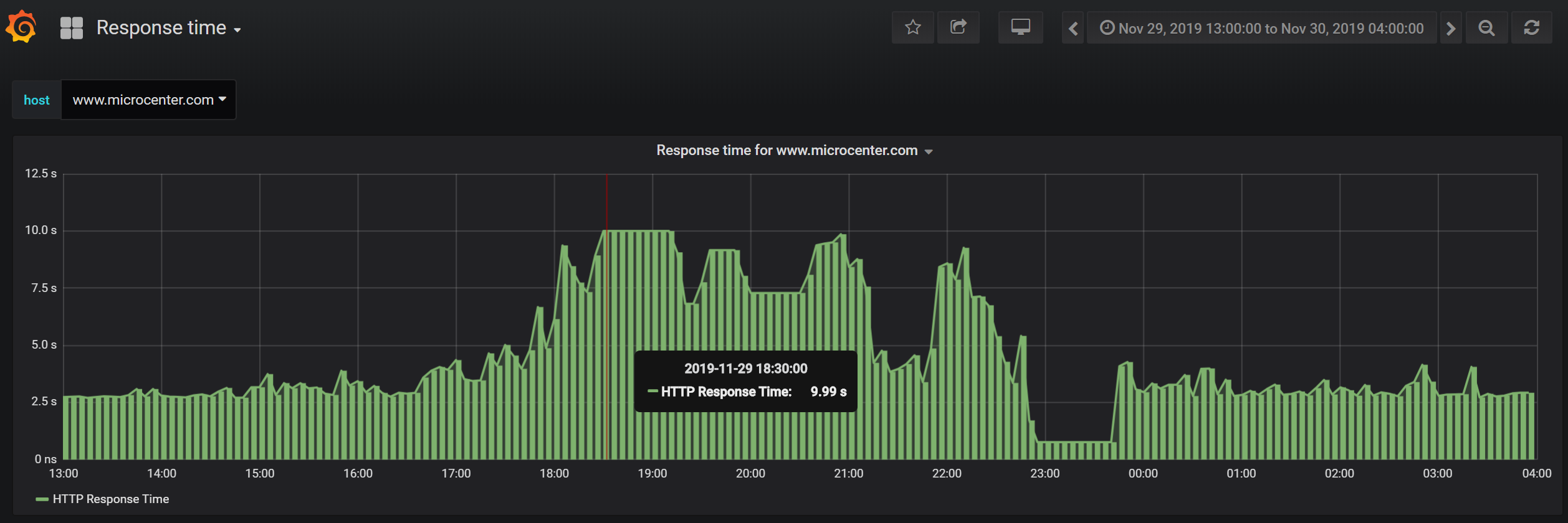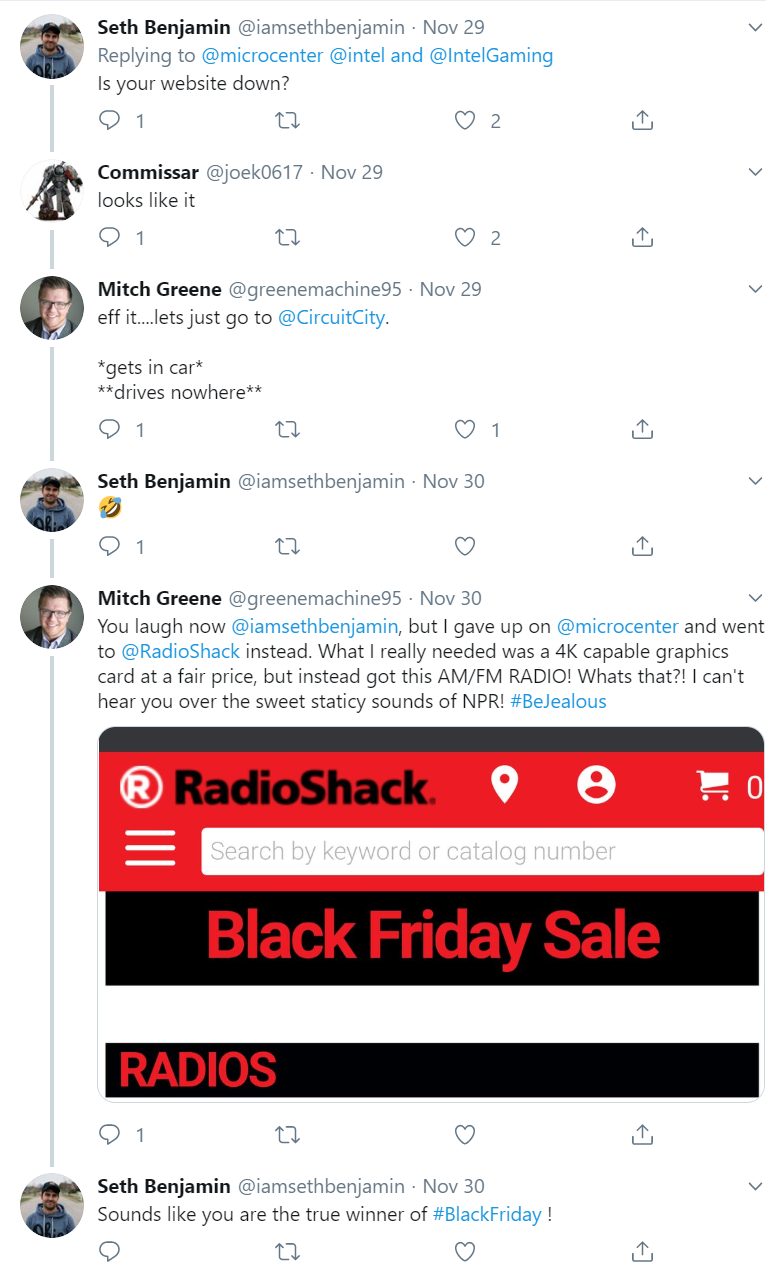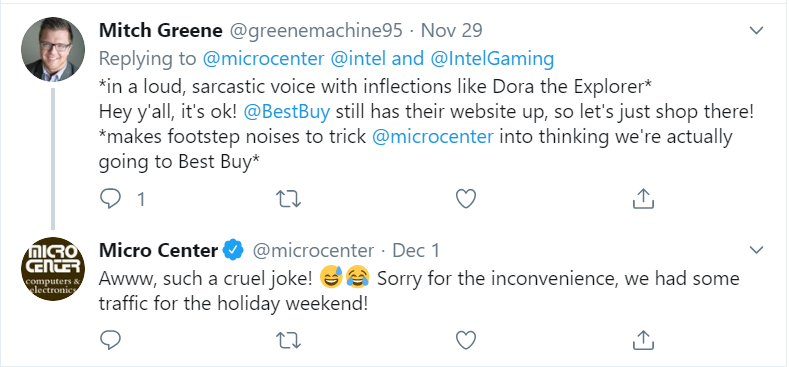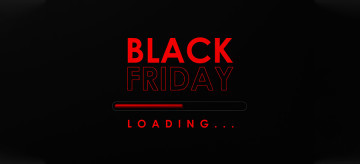- Advertising
- Bare Metal
- Bare Metal Cloud
- Benchmarks
- Big Data Benchmarks
- Big Data Experts Interviews
- Big Data Technologies
- Big Data Use Cases
- Big Data Week
- Cloud
- Data Lake as a Service
- Databases
- Dedicated Servers
- Disaster Recovery
- Features
- Fun
- GoTech World
- Hadoop
- Healthcare
- Industry Standards
- Insurance
- Linux
- News
- NoSQL
- Online Retail
- People of Bigstep
- Performance for Big Data Apps
- Press
- Press Corner
- Security
- Tech Trends
- Tutorial
- What is Big Data
Major Online Retail Website Crashes and Downtimes on Black Friday 2019
Most companies prepare for the Golden Quarter, however, even big online retailers still encounter website issues during high traffic. For this year’s Black Friday & Cyber Monday, we monitored major retailers’ websites to see how well they faced the high amount of traffic and what we can learn from it. But first, let’s see some stats and explain how we ran the tests.

Black Friday Stats 2019
According to Salesforce, Black Friday 2019 online sales went up 14% from last year in the US, amounting to $7.2 billion. However, according to SEMrush, the US is no longer in the race for number 1 in overall interest for the Black Friday event, being overthrown by Brazil, France and Germany. Globally, sales added up to a total of $20 billion, according to Salesforce.
Out of the orders that were placed online, 56% came from mobile devices, up 35% from last year. The key takeaway here is that online retailers should better optimize websites for mobile browsing.
How We Tested
We set up a server and ran the tests from Romania by using check HTTP to see in real-time what went on. We monitored major online retailers, such as Adidas, Amazon, Dyson, John Lewis, Nintendo Store, Disney Store, Superdry, and Urban Outfitters. All of them had spikes on Black Friday and Cyber Monday, however, we will first focus on the websites with long loading times.
Let’s take a closer look at how these retailers’ websites handled – or not –part of the Golden Quarter traffic.
Major Outages – Sinking Through the Floor
Microcenter, the computer department store that's in the top 200 American private companies, started their Black Friday streak on November 29. Unfortunately, however, their website encountered quite a long outage as seen in the below graph. On the first day, for about 45 minutes (4:47pm to 5:34pm* GMT), the website was well overloaded. The graph shows that during that time, the website was loading in more than 10 seconds… or even not at all, since people started complaining on social media.
 *graph time: GMT+2
*graph time: GMT+2

Provider: CenturyLink
Key takeaway: If your infrastructure can’t handle Black Friday, at least reschedule your advertisements for social media, cause people can and will retaliate:


 Be careful, your customers could even go running to your competitors if your website performs poorly. According to MarketingBulldog, 79% of customers who report dissatisfaction with website performance are less likely to buy from the same site, as we can see in this discussions on Twitter:
Be careful, your customers could even go running to your competitors if your website performs poorly. According to MarketingBulldog, 79% of customers who report dissatisfaction with website performance are less likely to buy from the same site, as we can see in this discussions on Twitter:


Good thing their social media specialist knows how to handle complaints and joke with the customers.
Halfords, the British retailer of car parts, tools, camping and touring bicycles, also ran a Black Friday campaign from November 29 until December 2. Generally speaking, their website handled the high traffic well, however, there was a huge spike on November 30 for about 30 minutes, when the HTTP response time reached 9.35 seconds. Perhaps they had a specific offer right then?
 *graph time: GMT+2
*graph time: GMT+2

Provider: TATA Communications
In any case, not taking into consideration this spike, Halfords had a nice Black Friday run overall; you can see they know what they’re up against and are preparing in time, since they already announced Black Friday 2020.
Jcrew, the American multi-brand apparel and accessories retailer that has more than 450 retail stores throughout the US, also ran a Black Friday Campaign from November 30 to December 1. They encountered issues right at the beginning of the campaign: around 10am* EST, the HTTP response time started increasing, reaching a peak of 8.30 seconds at 11:30am* EST.
 *graph time: GMT+2
*graph time: GMT+2
Provider: Akamai Technologies
GlassesUSA, the online retailer for prescription glasses, were probably prepared for Black Friday, but not so much for the CyberWeek Clearance Sale. The website had a really good overall streak, with only a rather big spike during CyberWeek (as seen in the graphs below) probably due to the numerous ads on social media:

And the graphs:


GlassesUSA is hosted on Google. Although it is a big provider that offers a lot of autoscaling possibilities, the website still encountered 502 Bad Gateway server problems during CyberWeek.

Minor Outages – It Happens to the Best of Us
Most websites we monitored had traffic spikes and it’s easy to notice how Black Friday & Cyber Monday traffic is compared to ordinary days. Since the traffic fluctuates between usual days and high-traffic periods, being able to scale up and down is a must.
Numerous studies show that anything over 4-5 seconds in loading time is unacceptable for customers in 2019. Moreover, according to Akamai:
- a 100-millisecond delay in website load time can hurt conversion rates by 7%
- a two-second delay in web page load time increases bounce rates by 103%
- 53% of mobile site visitors will leave a page that takes longer than three seconds to load
Here are some graphs clearly showing the difference that Black Friday and Cyber Monday bring in traffic:






How to Optimize Your Website for High Traffic
First and foremost, online retailers should test and benchmark their infrastructure a few months before to find out where they stand and the amount of traffic that their current infrastructure can handle.
Based on that, they need to see where the bottlenecks are: for instance, if the CPU or the database has any issues, or if they don’t have enough resources. After the assessment, there are several options to optimize the website:
- increase allocated resources, temporarily, for the duration of the event
- cache some areas of the website to reduce server lag, as storing and releasing copies of documents can satisfy certain requests directly
- optimize the databases and the ordering process so that it can handle the increased amounts of orders
- temporarily change dynamic pages into static ones; dynamic areas generate a lot of CPU consumption and database access (i.e. dynamic pricing pages, recommendations, social media, content)
- expand the cluster with additional “copies” of the website and use load balancers to spread the load.
When to Switch Providers?
The key lesson here is that resource scaling represents one of the most important features that you need for Black Friday, Cyber Monday, and for any other advertising campaigns that could bring a lot of customers at once on your website. Being able to easily scale up or down according to your business needs is mandatory nowadays if you want to attract and keep customers.
Keep in mind that when using third party providers you should pay attention to their cybersecurity practices and also make sure they have all the security audits and certifications in place.
Readers also enjoyed:

Black Friday 2019: How to Be a Success Story


Leave a Reply
Your email address will not be published.